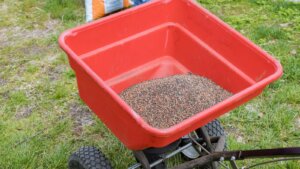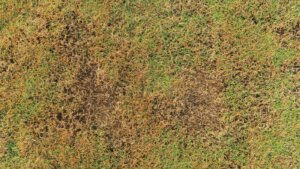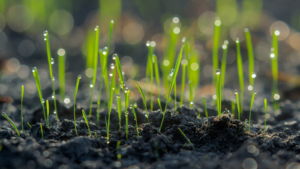Every gardener, whether novice or expert, has faced the challenge of plant nutrient deficiencies. When your once-thriving plant starts showing yellow leaves or stunted growth, it’s a sign that something is amiss in the soil. Understanding these deficiencies is crucial for ensuring the health and vitality of your plants.
Essential Plant Nutrient: Macronutrient and Micronutrient Overview
Like all living organisms, plants require a balance of essential nutrients to thrive. These can be broadly categorized into:
- Macronutrients: These are the nutrients plants need in larger amounts. They include:
- Nitrogen
- Phosphorus
- Potassium
- Sulfur
- Calcium
- Magnesium
- Micronutrients: These are required in smaller quantities but are equally vital. They encompass:
- Iron
- Manganese
- Zinc
- Copper
- Boron
- Molybdenum
Identifying Nutrient Deficiencies in Plants: Common Symptoms of a Nutrient Deficiency
At some point, every gardener encounters the challenge of nutrient deficiencies affecting their plants. These common nutrient deficiencies can significantly hinder plant growth and the garden’s overall health.
Plants require a delicate balance of nutrients to thrive, and when they don’t receive them, the symptoms become evident. The lower leaves may often start to yellow, or flowers might not bloom as vibrantly. In some cases, the leaves may scorch at the edges or show discoloration along the leaf veins. A once dark green and lush plant might appear pale, indicating it’s not achieving healthy growth. Recognizing these signs early on is crucial to address the deficiencies and restore the plant to its full potential.
Mobile Nutrients and Their Symptoms
These deficiencies typically manifest in the older leaves of the plant:
- Nitrogen (N): Essential for rapid growth, fruit, and seed development. A deficiency results in general chlorosis, turning the entire plant to light green and yellowing older leaves.
- Potassium (K): Vital for protein synthesis, cell division, and root development. A deficiency is marked by leaf edge chlorosis on newly matured leaves.
- Phosphorus (P): Promotes photosynthesis and protein formation. A deficiency leads to a purple or bronze coloration on the underside of older leaves.
- Magnesium (Mg): A structural component of the chlorophyll molecule. Deficiency symptoms include older leaves turning chlorotic between veins, a condition known as interveinal chlorosis.
Immobile Nutrients and Their Symptoms
These deficiencies appear in the younger leaves:
- Calcium (Ca): New growth points and root tips are essential. A deficiency results in new foliage and roots having stunted growth, with younger leaves curling downwards.
- Iron (Fe): Necessary for the synthesis of chloroplast proteins. A deficiency leads to light green to yellow interveinal chlorosis on newly emerging leaves.
- Manganese (Mn): Acts as an enzyme activator for nitrogen assimilation. Deficiency symptoms include newly emerging leaves showing diffused interveinal chlorosis.
Common Causes of Nutrient Deficiencies in Plants: From Soil to Iron Deficiency
Several factors can lead to nutrient deficiencies in plants:
- Soil Quality: The primary cause of nutrient deficiencies is the soil. If the soil lacks the required nutrients, the plants will too.
- Soil pH: The soil’s pH level can affect plant nutrient uptake. Some nutrients become less available as the soil becomes too acidic or alkaline.
- Watering Practices: Overwatering or underwatering can affect the plant’s ability to take up nutrients.
How to Address and Prevent Nutrient Deficiencies: From Magnesium Deficiency to Molybdenum Deficiency
- Soil Testing: Before making any amendments, it’s essential to test the soil to identify the cause of nutrient deficiencies.
- Fertilizers: Based on the soil test results, apply the appropriate lawn fertilization techniques to replenish the missing nutrients.
- Organic Matter: Incorporating organic matter like compost can improve soil quality and nutrient content.
Plant Nutrient Deficiency: Why Recognizing and Addressing It Is Crucial
Understanding nutrient deficiencies in plants is crucial for every gardener. Recognizing and addressing the signs can ensure your plants remain healthy and vibrant. Being informed is the key to a thriving garden, whether it’s the yellowing of leaves due to a nitrogen deficiency or the stunted growth caused by a lack of phosphorus.
Unlock the Full Potential of Your Garden with Terra Lawn Care
Every plant has its unique nutrient needs, and sometimes, even the most attentive gardener can face challenges in maintaining the perfect balance. But you don’t have to navigate these challenges alone. At Terra Lawn Care, we bring:
- Expertise: With over two decades in the field, we’ve seen it all – from nitrogen deficiencies to the intricacies of soil pH. We know how to bring your plants back to their prime.
- Tailored Solutions: Every garden is unique, and so are its challenges. We provide bespoke solutions based on your garden’s specific needs.
- Organic Approach: We believe in nurturing nature. Our commitment to organic lawn care ensures that your garden is not only beautiful but also environmentally sustainable.
- Local Knowledge: Our deep-rooted local expertise in Pennsylvania means we understand the region’s specific soil types and challenges, ensuring your plants get the care they truly deserve.
Don’t let nutrient deficiencies hold your garden back. Reach out to Terra Lawn Care today and let us guide you on the path to a lush, thriving garden. Your plants deserve the best, and we’re here to ensure they get it!



